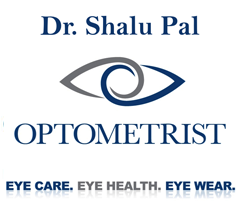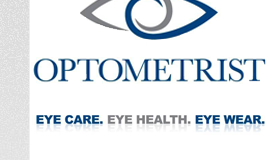Contents |
Progressive Lenses
When we begin to need extra help reading fine print or using a computer, we are said to be entering presbyopia. This is a normal change that occurs for most people when they are 40 to 45 years of age. (For further information, please see our article "Presbyopia: What is it, and What are the Options?")
The best choice for most people are multifocal lenses, especially progressive addition lenses (PALs).
Multifocal lenses, with or without lines are simply a convenience item; they allow the same pair of lenses to give us distance and near clarity in one pair of eyeglasses.
With a conventional bifocal or trifocal lens, the distance vision through the top of the lens is clear; to see fine print up close, we drop our eyes until we pass the line to look through the bottom "window" in the lens. However, this sometimes results in an area that is too far away from us to be in focus through the bottom of the lens, but is still too close to be in focus through the top of the lens. In other words, our intermediate vision is compromised. To get clear vision in that area, we would need a trifocal lens with yet another little window for that intermediate distance.
Progressive Changes
Progressive lenses are designed to change focus gradually, without lines across them; Instead, PALs are designed to change focus gradually, from far away to close up. The power increases in a progressive way so there is no visible line or sudden "jump" from the top part of the lens to the reading part. As we allow our eyes to drop through the lens, we experience clear vision at every distance, from street signs far away, to the dashboard in our intermediate range, and the tiny print on a road map.
However, it is important to understand that not all progressive addition lenses (PALs) are equal in the quality of their optics or how the lenses fit into the frames. Exact measurements of where the centers of the lenses will be in relation to your eyes are necessary for the best vision and comfort possible. Factors such as the placement of the optical center of the lens, the exact curvature of both the front and back surfaces and how far away those surfaces are from the center of the pupil are needed for best results.
In spite of web sites that advertise "low-cost" progressive lenses, it is not possible to get all that information without fitting characteristics available only when a person is present with the fully adjusted frame on his or her face. Frames and lenses may cost less initially but if they don’t work the savings disappear.
These factors become even more important if the individual patient has even slight differences in refractive error (farsightedness, nearsightedness, astigmatism) between the two eyes.
Now, computer-aided design techniques make it possible to eliminate optical aberrations, haloes, glare and other symptoms of discomfort with multifocal lenses.
Progressive Technology
Digital lenses are made using all the parameters available for each individual patient, including the exact distance from the back surface of the lens to the eye, the amount of tilting of the frame when it is fully adjusted, and the distance between the pupils, measured for both distance and near. The size and shape of the frames, the shape of the bridge of the nose and the calculated weight of the lenses when mounted in the frames are also taken into account.
The result is a pair of lenses with digitally-designed curvatures which are usually not simple curves with a single radius, like that of a baseball, but which may be more complex, like the parabolic curvatures seen on small TV satellite dishes. Because these complex curves change along their profile, they result in optimum focus, clarity and comfort for the person looking through them.
This type of digital lens design is a long way from the simple spherical curvatures that have been used for centuries in ophthalmic corrections. When combined with progressive addition multifocals, the result is a level of custom design not previously available.
Progressive Results
Presbyopia is a part of life, something we all will need to deal with at some point. If your vision currently requires correction for nearsightedness, farsightedness or astigmatism, a PAL can be considered to be a natural evolution of your eyewear. However, even if you have never worn any type of corrective lenses, a PAL is probably the best of several options for vision that feels natural, comfortable and clear, whether you are reading, using a computer and keyboard, driving, cooking or playing golf. There is no need to struggle with reading glasses that only work for some activities and not others, nor is there a need to accept blurred vision, even just some of the time.
And you won’t need that magnifying glass, either.
Diagnostic Codes
| ICD-10 | ICD-9 | |
|---|---|---|
| H52.4 | Presbyopia | 367.4 |






